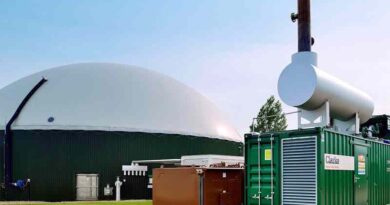An Organized Supply Chain Of Biomass Is The Only Way To Ensure Viability For Biofuels

- What is BiofuelCircle in a nutshell?
BiofuelCircle is an e-marketplace for the bioenergy supply chain connecting buyers and sellers of Agri-residue biomass, biofuels, and bio-fertilizers. India generates close to 700 million tons of Agri-residue biomass every year and 60% of this is used as cattle feed, while >235 million tons of residual biomass is available as surplus. The absence of economically feasible models has so far resulted in >7-% of biomass going to waste. BiofuelCircle has set up an entire ecosystem that includes an online marketplace, and services for equipment, transport, warehousing, etc. This attempts to create reliable and dependable supply chain service in an otherwise unorganized supply chain.
- How did the firm fare since inception in terms of users, revenues, etc?
We developed our Alfa product in 2020 and were fortunate to signup with a large energy services company as Alfa Customer. After a 6-month pilot between January and June 2021, we started commercial operations in July 2021. BiofuelCircle currently operates in 3 Indian states and has a base of 450 business subscribers. The platform has successfully completed transactions totaling >50,000 MT of biomass. This is still an early stage of operation for us. We are now in the process of setting stronger rural linkages. This is an important step toward increasing the quantum of biomass supplies to the industry.
- What is the scope of Biofuel in a world where fossil fuel is losing its monopoly with the emergence of green renewable energy?
In the coming decades, Biofuels will have a significant role to play in the energy mix. In a country such as India, it offers an opportunity to combine green pursuits with strong economic and social incentives in the rural economy. The surplus residual biomass in India has the potential to improve livelihood and employment in rural areas in addition to the positive environmental impact. 235 million tons of biomass can help create more than 2,500 biomass processing businesses in rural India. So, this is an opportunity for us to create sustained strong businesses that help create a circular economy using Agri-residue biomass as its fulcrum.
- What challenges and major issues does the biofuel industry face in India?
The biomass supply chain is highly fragmented and unorganized. This impacts the availability and reliability of supplies. Investors in biomass ventures are keenly looking at improved reliability and predictability as mitigants for financing new projects. The availability of equipment for biomass evacuation, lack of capital for storage and rural processing and absence of direct linkages between producers and consumers are three areas of constraint and opportunity. We need to start looking at this sector as an industry and provide the support that is typically available to any other industrial sector. This will lead to higher participation and more investment. Our attempt at BiofuelCircle is to help create such linkages and provide visibility to opportunity and underlying financials so that investments can take place.
- How does BiofuelCircle help to integrate the producers (farmers)?
The BiofuelCircle app provides information to farmers on opportunities, prices and deals and allows them to conduct transactions for their produce with ease and simplicity. Its services make sure that the farmer does not have to worry about transport and other services and makes sure that digital payments are made on delivery. It thus offers direct means to the farmer to earn from the Agri-waste. For Industrial participants, biomass is like any other feedstock. So, reliability of supplies, predictability of prices and choice of suppliers are some of the hygiene factors for them. BiofuelCircle makes all this possible with the added benefit of digitalization-driven efficiency.
- We see potential Biofuel demand for ethanol as well as the CBG sectors. Is there enough biomass to go around? Why haven’t the CBG projections worked out so far?
Biomass availability is not a problem, its storage, transportation, and timely delivery are where the challenges lie. Visible Economic benefits for farmers can ensure stronger participation. Coupled with this, a network of rural businesses that help harness biomass into transportable produce will result in reliable supplies. An organized supply chain of biomass is the only way to ensure viability for the bioethanol as well as CBG projects.
- How do you feel about the risk of diverting food grains for biofuels, as seen with corn in the US, and now, sugar in India possibly?
I believe that the best case scenario is around the use of agri-residue biomass coupled with the use of fuel crops aimed at bio-energy. The natural waste generated while producing food crops and naturally produced forest waste is something we need to have a solution for, and bioenergy is the right way here. Rather than looking at surplus food grain, we need to look at energy crops that provide both livelihoods to farmers and a clean energy alternative.
- What about related issues like the use of water resources for biofuel production?
As long as the focus is on waste, and the ability to use arid land for fuel crops such as Napier grass, we can stay away from the water resource issue.
- How about the use of stubble in thermal plants? That plan seems to be progressing slowly. How could we accelerate that process in India?
Industrial as well as power as end use for biomass will require the reliability of supplies on an industrial scale and this is where all our problems lie. The only way to address this is by making the supply chain reliable and dependable. I do believe that a model such as BiofuelCircle does exactly that. It makes the supply of biomass economically attractive for the farmer, helps create small village-level enterprises that are connected to large industrial buyers and use digital to create scalability in this supply chain.




